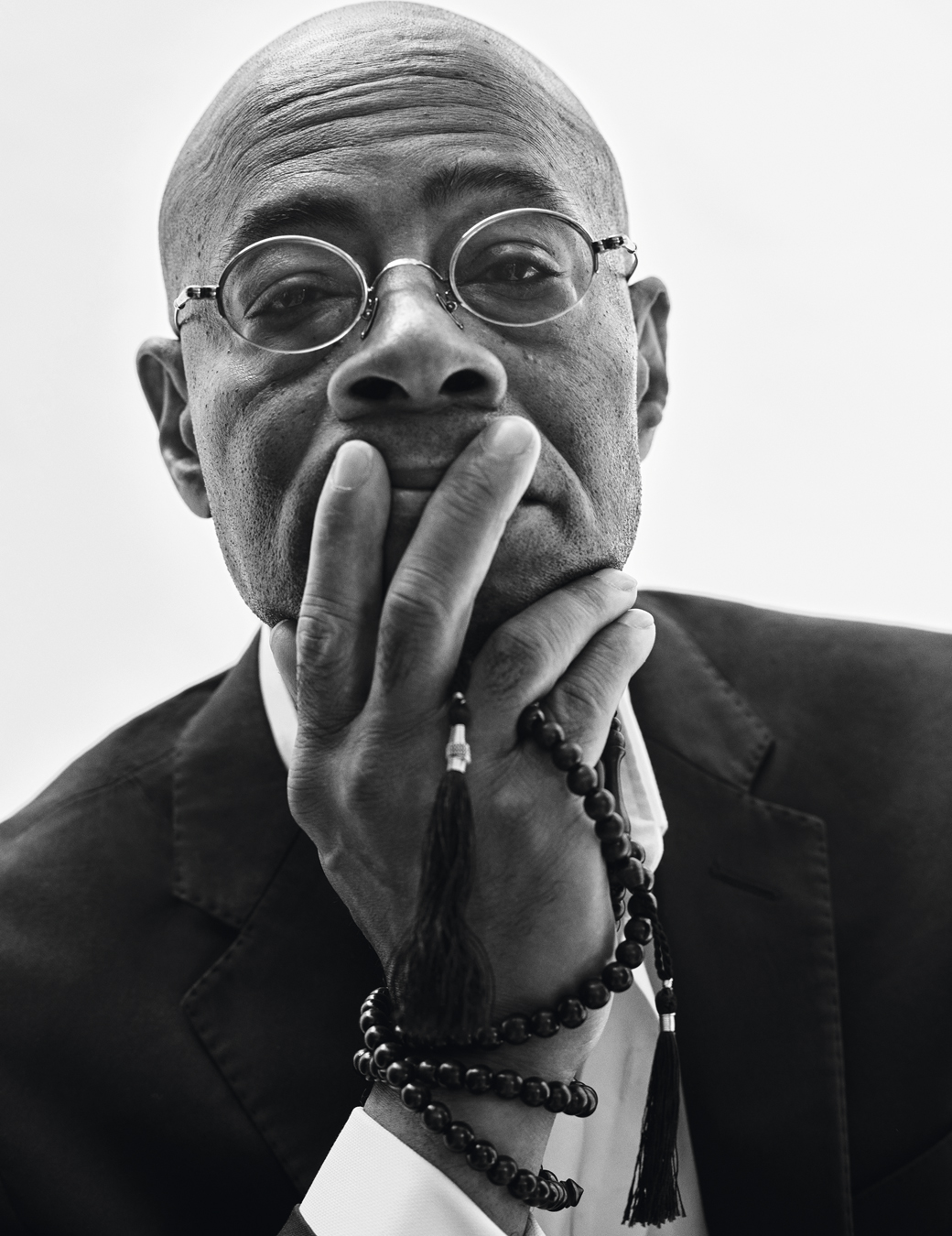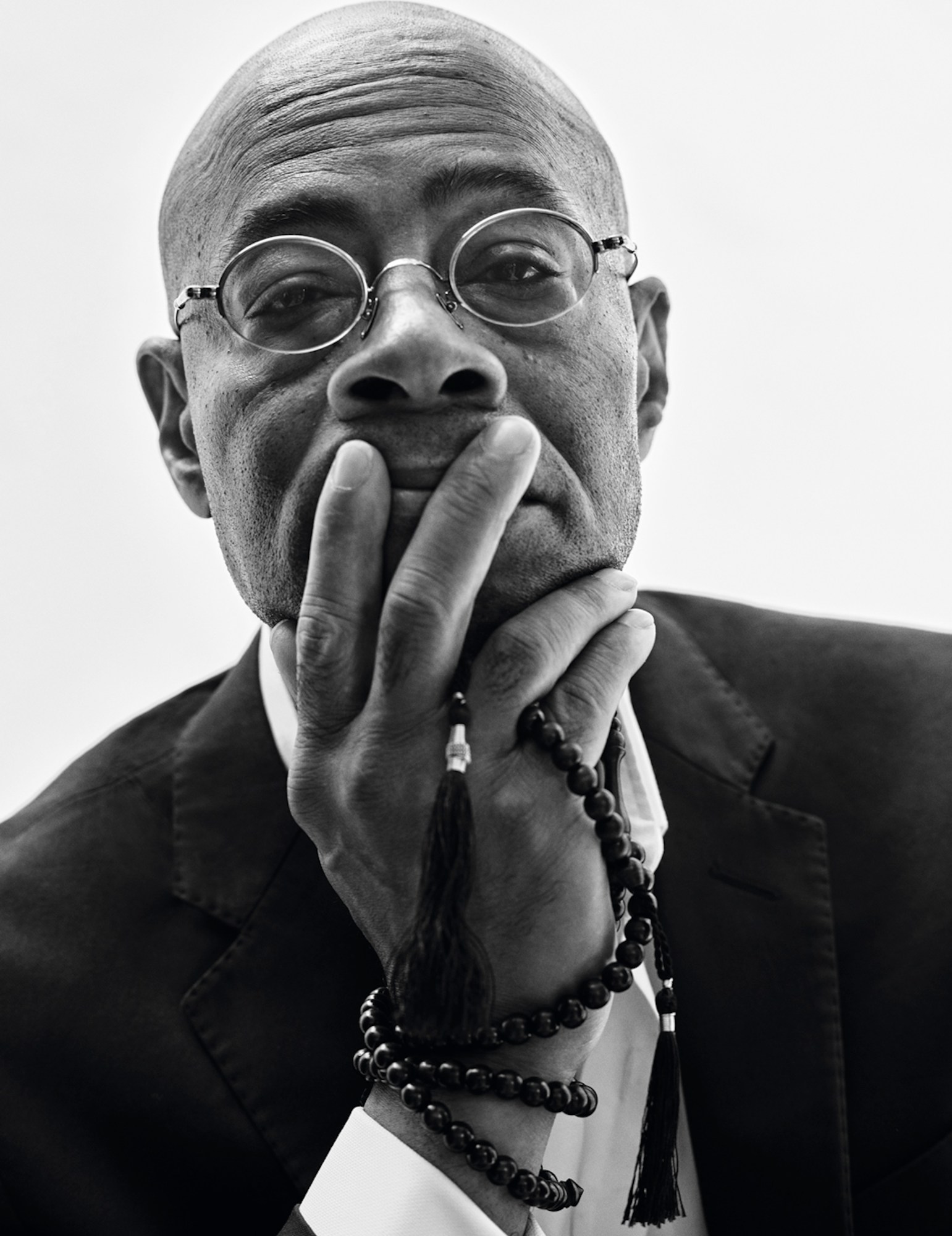This story originally appeared in i-D’s The Darker Issue, no. 365, Winter 2021. Order your copy here.
When I wrote the essay, On the Question of Nigga Authenticity, I was trying to pay attention to living practices and their aesthetic expression. Something that I now call “poetic socialites.” In that piece, the poetic sociality I was interested in was hip-hop, which was something that was sort of in the background of my foundation in the late 70s.
My first tenure track job was at Carnegie Mellon University. In 1991, a student organisation brought Ice-T on campus and I was asked to be his host. Nigga Authenticity came out of a long conversation I had with him during that visit. We talked about issues of flow, issues of form and how he thought about his process and his art; how he thought about language and its relationship to social reality. We also discussed how that thinking was in contrast to the ways in which people were talking about these young Black artists as simply nihilistic. I’m thinking of a piece by Cornel West, Nihilism in Black America; but also, people like New York Times music critic, John Pareles, who around 1985 began to talk about this thing called, “gangster rap.”
Some of what Cornel West was saying about aspects of nihilism were in play, but they didn’t really capture the kind of work that someone like Ice-T or KRS-One was doing. They were being categorised as “gangster rappers,” but were doing some really experimental things. What mattered to them were issues of the differences of flow between the West Coast and East Coast, the nature of style and the sampling that was taking place, the musical fuel that was involved. So that essay was an effort to respond to the charge of nihilism, but not respond in an argumentative or polemic way, rather saying: “Well, wait a minute, there’s some thinking going on with these people, let’s look at it; and looking at it, understand the ways in which the category of nihilism as we tend to use it, doesn’t quite capture what they’re doing. They’re doing something else, right.” These young people were thinking around the corner; their form mattered, and we have to pay attention to their aesthetics. I returned to this issue of aesthetic form in the piece I recently wrote for the journal, Liquid Black, where I’m talking about Black liquidity as an economic issue, but also in terms of flow, which stands in a tense relationship to capital structure. I wanted to first open up the question of what Blackness is and talk about it as a matter of form, of thinking and expressing the human condition, and not simply an ethnic identity, or racial category. In that regard, the material, the media with which the thinking is taking place, and the styles of thinking, the technique, matter.
So, in this piece on Black liquidity, I wanted to do that with respect to Blackness but, at the same time, I wanted to draw attention to a specific relationship, a tense relationship within the current art world between the performative energy of an artist’s work and its value as a financial asset. This relationship has an interesting resonance with what was going on in the first half of the 19th century when an international system of credit emerged around, not the labor of Black slaves, but simply the fact of owning a Black slave’s body. In that credit system, ownership became capitalised as a financial asset and it was the basis for borrowing money. In 1850, the accumulated speculative slave assets in the US had a market value of $1.3 billion, which was one-fifth of the overall US wealth. I wanted to draw a parallel between that structure and what’s going on with art right now. Today, the concept of Blackness – as opposed to whatever is the creative work of those who are called Black – in itself has become a variable in the evaluation of art as a financial asset listed in the portfolios of significant asset-based bankers. The value Blackness has in that structure is very much akin to what was going on around the issue of creating credit in the ownership of Blacks in the 19th century. What’s crucial about this resonance is the way in which Blackness becomes a focal point for a working of capitalism at a high financial level of complete abstraction, in which the generation of value is very much removed from any of the creative work of people, of human beings. Values is an abstract narrative that now takes place at the level of art galleries and the business world.

My point is that what’s being traded is the abstract capacity of evaluation. In some sense, it has everything to do with Black people and nothing to do with Black people. So, that in trading in Blackness, Blackness is functioning as a sort of marker of an economy of financial exchange that is free floating. One of the things we’re seeing in our world is this kind of emptying out of value, or this kind of explosion of value where everything can become evaluated in some sort of financial terms that are nebulous and elusive; their relationship to the materiality of what we live is not what people are invested in.
One of the ways we talk about this in terms of Black creativity – and it’s a way that I’m not comfortable with; I think it’s inadequate – is appropriation. This language misses what’s going on completely; it misses the extent to which what’s happening with those Black artists is not so much just about those Black artists, it’s about the tremendous capacity of capitalism in this form of high finance to monetise everything, every expression. So, the question is: How does one stay a step ahead of that? Or how does one do things in the interstices between that? We be, as Fred Moten puts it, “in the break,” which is a very old concept that we play with in music, especially hip-hop music. Grandmaster Flash develops his foundational quick mix theory to prolong the break. The challenge is how to live in the break, and live fully.
I agree with the remark Anthony Braxton made almost 36 years ago in the British music magazine, The Wire, that Black people are constitutively experimental. This has to do with his notion of “trans-African functionalism,” a poetic know- how. I also agree with him when he says, the moment we stop being experimental, we will cease to exist. To which I would add, the moment it’s impossible to be experimental, we will cease to be, not merely as Black people, but as humans. This has to do with the flow of imagination, of poetic socialities that are committed to reckoning with ways of human being. Now those kinds of socialities are all over the place. If you pay attention, you can find them in pockets in the Bronx or Inwood. You can find them in San Francisco and Atlanta. You can find them where artists are getting together, musicians, painters, and they’re trying to attend to what we used to call the human condition. In the same way James Baldwin pointed out back in his famous speech at the church in Harlem in 1964 that the artist, more than the general, banker, or businessman, is a manifestation of how we are as human beings because it is the performance of what’s possible.
Credits
Photography Mario Sorrenti
Fashion Alastair McKimm
